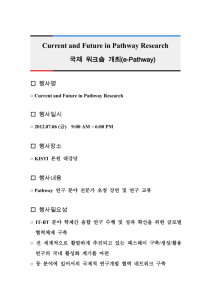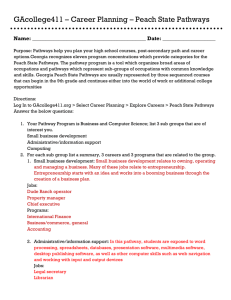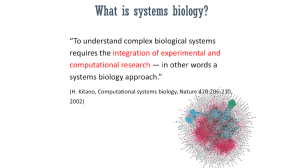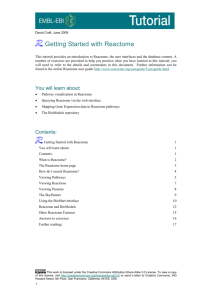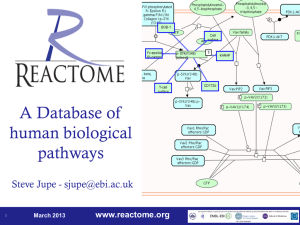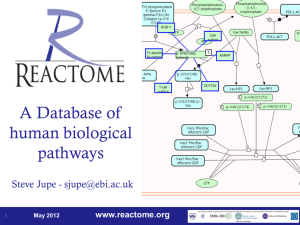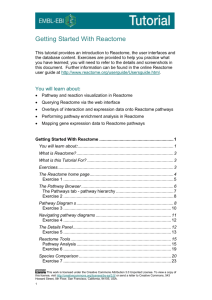Problem Set 05
advertisement
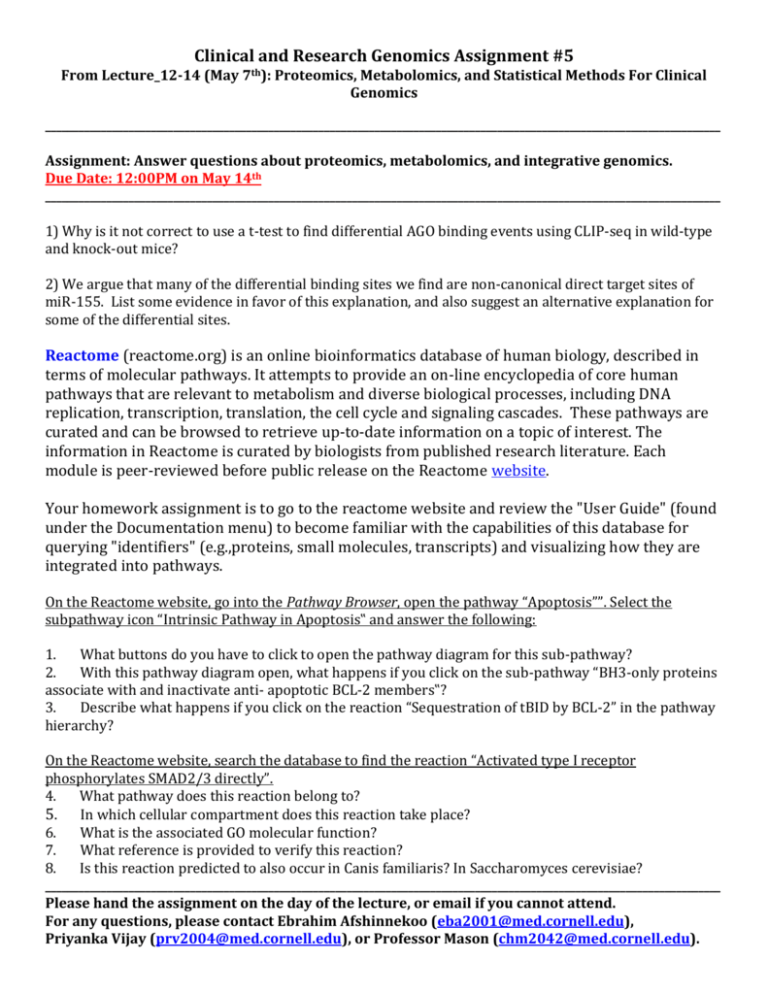
Clinical and Research Genomics Assignment #5 From Lecture_12-14 (May 7th): Proteomics, Metabolomics, and Statistical Methods For Clinical Genomics _________________________________________________________________________________________________________________________ Assignment: Answer questions about proteomics, metabolomics, and integrative genomics. Due Date: 12:00PM on May 14th _________________________________________________________________________________________________________________________ 1) Why is it not correct to use a t-test to find differential AGO binding events using CLIP-seq in wild-type and knock-out mice? 2) We argue that many of the differential binding sites we find are non-canonical direct target sites of miR-155. List some evidence in favor of this explanation, and also suggest an alternative explanation for some of the differential sites. Reactome (reactome.org) is an online bioinformatics database of human biology, described in terms of molecular pathways. It attempts to provide an on-line encyclopedia of core human pathways that are relevant to metabolism and diverse biological processes, including DNA replication, transcription, translation, the cell cycle and signaling cascades. These pathways are curated and can be browsed to retrieve up-to-date information on a topic of interest. The information in Reactome is curated by biologists from published research literature. Each module is peer-reviewed before public release on the Reactome website. Your homework assignment is to go to the reactome website and review the "User Guide" (found under the Documentation menu) to become familiar with the capabilities of this database for querying "identifiers" (e.g.,proteins, small molecules, transcripts) and visualizing how they are integrated into pathways. On the Reactome website, go into the Pathway Browser, open the pathway “Apoptosis””. Select the subpathway icon “Intrinsic Pathway in Apoptosis‟ and answer the following: 1. What buttons do you have to click to open the pathway diagram for this sub-pathway? 2. With this pathway diagram open, what happens if you click on the sub-pathway “BH3-only proteins associate with and inactivate anti- apoptotic BCL-2 members‟? 3. Describe what happens if you click on the reaction “Sequestration of tBID by BCL-2” in the pathway hierarchy? On the Reactome website, search the database to find the reaction “Activated type I receptor phosphorylates SMAD2/3 directly”. 4. What pathway does this reaction belong to? 5. In which cellular compartment does this reaction take place? 6. What is the associated GO molecular function? 7. What reference is provided to verify this reaction? 8. Is this reaction predicted to also occur in Canis familiaris? In Saccharomyces cerevisiae? _________________________________________________________________________________________________________________________ Please hand the assignment on the day of the lecture, or email if you cannot attend. For any questions, please contact Ebrahim Afshinnekoo (eba2001@med.cornell.edu), Priyanka Vijay (prv2004@med.cornell.edu), or Professor Mason (chm2042@med.cornell.edu).


![Major Change to a Course or Pathway [DOCX 31.06KB]](http://s3.studylib.net/store/data/006879957_1-7d46b1f6b93d0bf5c854352080131369-300x300.png)
